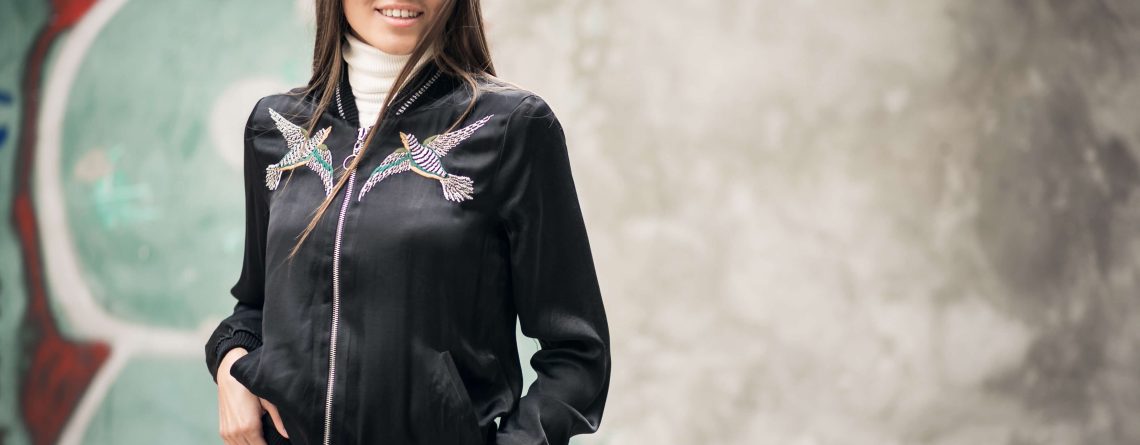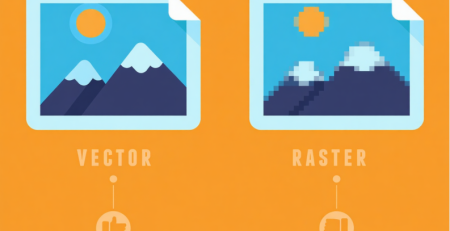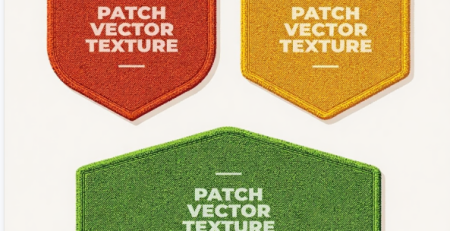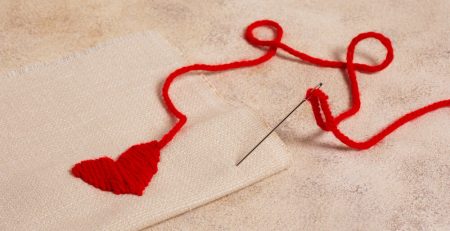Jacket Back Embroidery For Large-Scale Designs
Embroidery on jacket backs transforms ordinary outerwear into bold, personalized statements. With 2025’s trend toward oversized and expressive designs, mastering large-scale jacket back embroidery is essential for quality, durability, and style. Whether working with denim, leather, or lighter fabrics, large designs require careful planning, digitizing expertise, and technical know-how. This guide covers everything from design placement to finishing touches, with insights tailored for embroiderers looking to deliver flawless jacket back embroidery.
Precise Design Placement: The Foundation of Success
- Accurate measurement of the jacket back is crucial. Jackets vary by size and style, so measure the available embroidery area, avoiding seams, pockets, and hardware.
- Placement is typically 9–10 inches below the collar for adult jackets, centering designs between side seams for optimum visibility and balance.
- Use printed templates and removable fabric markers to outline the design area. Mark horizontal and vertical axis lines to align the embroidery hoop precisely.
- For perfect logo alignment and balance, explore our guide on selecting placement for embroidery on shirts.
- At Unique Digitizing, we specialize in accurate placement planning that ensures your large designs fit perfectly and look professionally executed without distortion or misalignment.
Digitizing Large Designs: Balancing Art and Engineering
- Large-scale embroidery needs digitizing files optimized for stitch density and fabric stability to prevent puckering or stiff textures.
- Stitch types such as fill stitches, tatami, and layered satin are carefully programmed to create texture without adding bulk or compromising garment flexibility.
- Stitch sequence impacts embroidery quality and should be designed to minimize hoop movement and thread breaks.
- Unique Digitizing offers professional digitizing services tailored for jacket backs, where expert attention to stitch detail and sequencing results in soft, wearable designs.
Choosing the Right Stabilizers and Hooping Techniques
Stabilization is foundational to embroidery quality. Medium-weight cutaway stabilizers, applied with temporary spray adhesive, provide firm backing without fabric distortion.
Hooping large jacket backs often requires sectional hooping or jumbo hoops. When fabric cannot be fully hooped, careful floating techniques involving a hooped stabilizer and spray adhesives secure the fabric.
Accurate alignment of hoop axis marks with fabric markings ensures precise placement during stitching.
For detailed hooping insights, see our guide on cap embroidery techniques, which apply similar principles for curved and complex surfaces.
Unique Digitizing’s fabric handling expertise ensures stabilization methods are chosen specifically for jacket materials, improving stitch accuracy and finish quality.
Stitching Recommendations: Thread, Needle, and Machine Settings
- Use appropriate needle sizes: 75/11 for lighter fabrics, 90/14 for denim or heavy materials.
- Embroidery thread weight varies; 40 wt. is standard, while 60 wt. offers finer detail.
- Adjust tension and reduce stitch density on padded or textured jackets to avoid fabric distortion.
- Slower stitching speeds increase control and reduce hoop shifting.
- Starting with basting stitches or using water-soluble toppers can enhance stitch precision and reduce fabric stress.
To understand how stitch density differs by design type, compare processes in Embroidery Digitizing vs. Vector Conversion.
Also, if you want a design that pops, learn about 3D puff embroidery digitizing — a great technique for textured jacket logos.
Texturing and Design Finishing for Large Embroidery
Employ layered stitching to add dimension and visual interest, using fill and satin stitches strategically.
Balance stitch density for durability and comfort, especially on heavier jacket fabrics.
Trim excess stabilizer gently, leaving support close to stitches. Clean away any water-soluble toppers or fabric markings as per product instructions.
For brand-focused finishing, explore custom embroidery digitizing for branding to give your jackets a polished, market-ready look.
You can also enhance texture using methods similar to digitize 3D puff embroidery.
Testing and Refinement: Guaranteeing a Perfect Outcome
Conduct test embroidery on fabric samples of the jacket material to identify and correct issues in stitch tension, density, and placement.
Adjust digitizing files based on test results to ensure consistent quality throughout production.
Unique Digitizing integrates sample testing as a critical step for flawless execution in large-scale jacket back embroidery.
Before you start outsourcing your designs, it’s smart to review questions to ask before choosing an embroidery digitizing company — ensuring you’re working with professionals who understand jacket back intricacies.
You can also check our embroidery digitizing cost guide to estimate pricing for large back designs.
Final Thoughts
Large jacket back embroidery is where creativity meets precision. From design layout to the final stitch, every stage determines the outcome’s visual impact and durability.
By trusting Unique Digitizing for your jacket back digitizing, you ensure professional-grade results that hold up beautifully through wear, washing, and time.
Want to explore more design inspiration? Take a look at our Bull Mascot Vector Art — a perfect example of powerful, scalable artwork ready for bold jacket backs.
FAQs
Q: What size designs work best for jacket backs?
A: Designs up to 20 inches wide are popular, with placement centered between seams and below the collar to avoid wrinkles or distortions.
Q: How do I hoop a jacket for embroidery when fabric is thick or stiff?
A: Use sectional hooping or float the fabric over a hooped stabilizer secured with temporary spray adhesive. Basting the fabric to the stabilizer can increase stability.
Q: Which stabilizer should I use for denim jackets?
A: Medium-weight cutaway stabilizers provide the best support for denim, reducing puckering and stretching during embroidery.
Q: How can I prevent fabric puckering in large embroidery?
A: Proper digitizing with balanced stitch density, using correct stabilizers, and careful hooping techniques all help prevent puckering.
Q: Is it better to embroider pre-made jackets or garments made to order?
A: Embroidering pre-made jackets is common, but garments made to order offer more control over fabric and fit for embroidery.












Leave a Reply